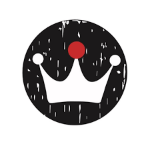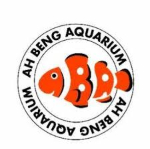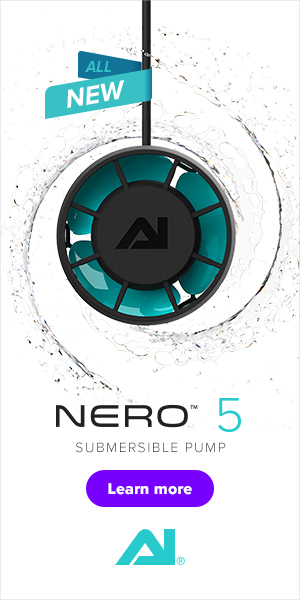Setting Up a Quarantine Tank for a marine aquarium
A very much debated topic among the hobbyist during the setting up of a marine tank if there is really a need for setting up a quarantine tank? How important is it for keeping a successful marine reef aquarium?
Perhaps for a freshwater tank, the setting up of a Quarantine tank may not be 100% necessary, since most of the freshwater fishes are either tank-raised or captive breed, and the chances of diseases outbreak out is often consider rather less common as compared to their saltwater counterparts.


However, for a marine tank setup, we would strongly recommend you to have a Quarantine tank setup. Since most of the marine specimens are mostly wild-caught and not being used to keep in captivity, their journey to your home tank usually much longer and stressful for them. Fish which are stressed will usually come down with a certain kind of diseases from it. Having a QT will also allow you to notice any fist sigh of illness outbreak which can be treated immediately without spreading to the fishes in your main display tank. Most corals are sensitive to medicines which are used to treat this illness, and some of these medicines may wipe out all the invertebrates in your tank as well.. So be sure to research on the medicine before using it on your main display tank with corals and invertebrates.

Apart for quarantine newly bought marine fish, the Quarantine tank is useful to act as a hospital tank to treat your fish which fall sick or being bullied from other fishes and training your newly bought fish to feed before adding to your main display tank as well.
Setting up a QT tank
 A simple QT setup
A simple QT setup
You don’t need to get a fully equipment tank with sump, skimmer and lighting, but a simple 10 – 20-gallon ( 40 ~ 80 litres) of the aquarium would be sufficient for most cases. If you have a larger fish, you would want to get a bigger quarantine tank setup instead. All you need is some simple bare-bones equipment required for the setting up of biological and mechanical filtration. Since the tank setup is bare minimal, it is necessary to check on the PH, Ammonia and Nitrite on a more constant basis. Daily small water change is recommended to keep the parameter in check as well. I always had some filter media or sponge filter in my existing tank which is seeded with bacteria which enable me to transfer for us on to the quarantine tank when the need arise.
Do include some fixture for the fishes to hide to reduce the newly introduced fish, and I find that big PVC fitting is of good use for this.
In conclusion, the advantages to set up a Quarantine outright the fact of not doing so. So help yourself to save some money from your livestock, headaches and especially the fish by having a quarantine tank. The fish in your main tank will thank you for it.
How long do I need to Quarantine my newly bought fish?
A good practice is to Quarantine all newly purchase fishes for a period of 21 ~ 30 days due to the diseases and parasite cycle. However, you can quarantine your newly bought fish for as long as 6 months or more. You do not need to medicate the tank if the fish shows NO symptoms of any disease or parasite. However, do remember to keep an eye on ammonia, nitrite and nitrate, and do weekly or regular water changes as needed. Make sure to top off evaporated water with fresh water. After feeding your fish, try and remove as much uneaten food as possible as this can contribute to ammonia spikes.
When the quarantine period is over, this is the time where you can safely transfer the fish from the quarantine tank to your display tank. If any of the water parameters may be different from quarantine tank to display tank, I suggest performing a drip acclimation of at least 30 minutes to help the fish acclimate to the display tank. You can now shut down your quarantine tank until your next acquisition. Empty the tank of water and put any sponge(s) filter or any filter media back into your display tank sump and turn off all equipment. You can also choose to keep the quarantine tank going without any fish in it. However, You will need to keep the bacteria alive by adding small amounts of food every few days. Perform water changes maybe once a month; you can use water from the display tank.


















I would like to say I would like to saye2€a6when buying fish, you geneealizrd the 1 one inch to 1 one gallon rule, but heres the thing, you need to use the ADULT GROWTH. if your buying a cichlid thats a small fry and you want to keep it as an adult, not changing tanks, you would go to ADULT GROWTH , Africans can be 9inches, so you need 9 gallons for each fish. e2€a6.. when you add decorations, you need to use the 1 one inch to 1 one gallon rule, because it takes up the same volume of water as fish.
[…] Quarantine or hospital tanks do not need to be a full-scale large tank as they are the only temporary place to house the fish for a short period of time. Usually, a ten-gallon tank would suffice for almost all types of small marine fishes, however, for a larger marine fish, you may need a larger Quarantine tank . […]
[…] Quarantine simply means to isolate all new livestock that has arrived from another location that may have been exposed to infectious or contagious disease/parasites, before introducing it into the current system to prevent any form of diseases spreading to existing healthy fishes in the system. The quarantine period is typically 2-4 weeks to observe if the newly purchased fish shows any signs of illness or disease and make any treatment if necessary in an isolated tank before introducing it into the main display tank. You can read about setting up a simple Quarantine system here […]